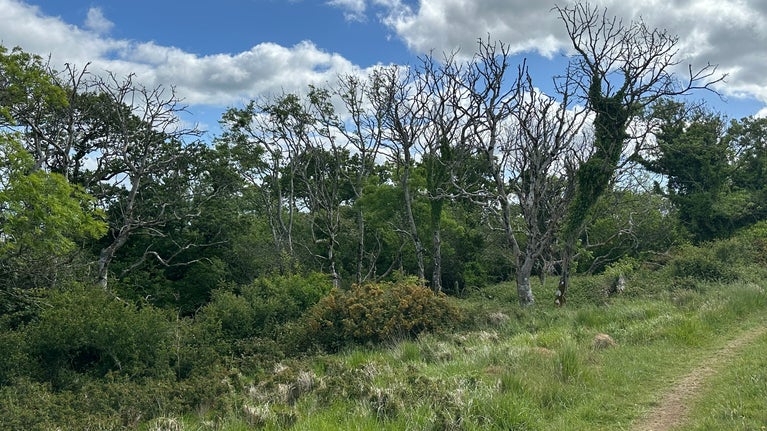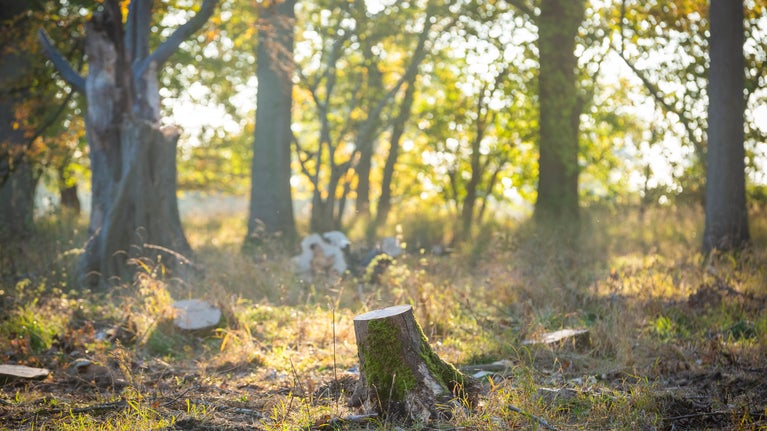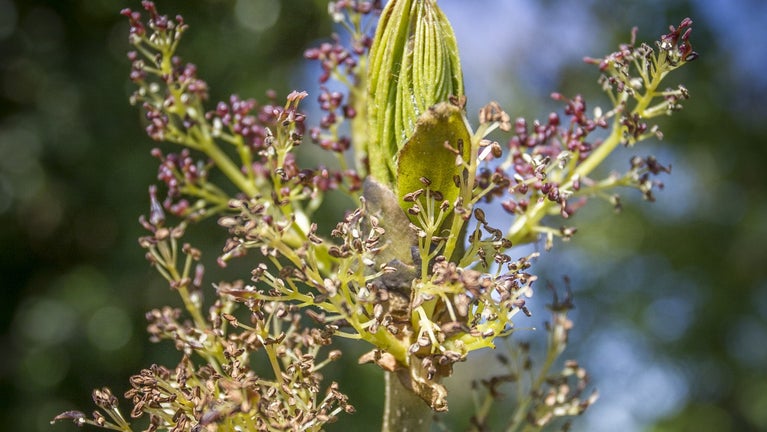Tackling ash dieback in Purbeck

Ash dieback is a devastating disease that’s threatening trees and woodlands throughout the country. First recorded in the UK back in 2012, it has spread rapidly and has been predicted to kill up to 80% of ash trees. Sadly, it is present in Purbeck, including Langton Westwood and Kingswood, where hundreds of trees are infected.
What is ash dieback?
Ash dieback is caused by a fungus called Hymenoscyphus fraxineus which originated in Asia and spread to Europe via the global plant trade. With its windborne spores, the fungus spreads quickly. The name 'dieback' refers to the decline in leaves in the tree canopy, one of the symptoms of the disease. Once a tree is infected, it becomes brittle, dropping limbs and branches, and eventually toppling completely. This can happen at any time, not just in storms.
Ash dieback in Purbeck
One of the worst affected woods in Purbeck is Langton Westwood, in Langton Matravers. Approximately 60 percent of the trees here are ash, and an estimated 600-800 are infected. This has public safely implications because of the numerous footpaths that run through this popular woodland.

Tackling ash dieback
We can’t just fell all the trees affected by ash dieback, because:
- Critically, there is a chance that some affected trees will develop natural resilience, so we need to give them chance to recover or drop seed for a future resilient population.
- Standing deadwood is a great habitat for insects, lichen and fungi. Birds and bats (including nationally rare species) use the cavities to nest in and feed on the many insects.
- It isn’t practical or affordable to fell so many trees.
But we do need to consider the needs of public safety. This will involve taking out the trees that pose the biggest risk on the busier routes, as well as closing some of the quieter paths through the woods.
Our ranger team has carefully assessed the areas where infected ash trees will cause a high safety risk to people. We have worked with the local parish councils and stakeholders to decide the best way forward at Langton Westwood. The agreed approach is to close a percentage of routes, while maintaining a smaller number of paths including the formal Rights of Way.
We will remove nearly 200 affected trees starting in the autumn/winter of 2025. But please note that no woodland is safe from falling debris and trees, so take care, especially in strong winds.

A positive note
It’s not all doom and gloom – although some trees will be lost, light will be allowed into the woodland floor which will attract a wealth of wildflowers, butterflies, pollinators and birds. New trees will eventually emerge where the old ones stood. We also have plans to plant native broadleaf trees if necessary.
There is also news that scientists have recently discovered that a new generation of ash trees, growing naturally in woodland, is showing greater resistance to the disease than the older trees. Their studies offer renewed hope for the future of ash trees in the British landscape. We’ll continue to follow and review our actions against the best scientific and industry standards.
Our hope is that we can reinstate access in the future, where and when safe to do so, while allowing time for the woodland to recover.
